The United States military operates at a conceptual level that goes beyond any other school of thought, with the possible exception of academic philosophy, because they have a much larger budget.

Sometimes in the evenings I like to put the kids to bed, pour myself a drink, and search the Internet for military-generated PDFs to look at the amazing graphics inside them. I thought I was the only person with this hobby, but a few weeks ago my friend Finn Smith told me that he also likes military graphics in PDF format. The Internet brings people together beautifully.
Finn and I soon agreed that "battlespace awareness" was a particularly good search term . The best way to start a search like this is to ask Google to only search military PDFs. Like this one, for example:
“battlespace awareness” filetype:pdf site:*.mil
What is "combat space awareness"? Well, at a very very high level, various parts of the US military are trying to create an operating system for use in wartime situations. These efforts have created all sorts of problems and funding opportunities. What should the interface look like? How should the enemy be identified on the screen? What role should drones play? Etc. And as a side effect of all of this, thinking people sometimes create diagrams that explain their ideas and justify their budgets. Here's an example from Joint Synthetic Battlespace: Cornerstone for Predictive Battlespace Awareness by Fister, Bush and Plonisch.
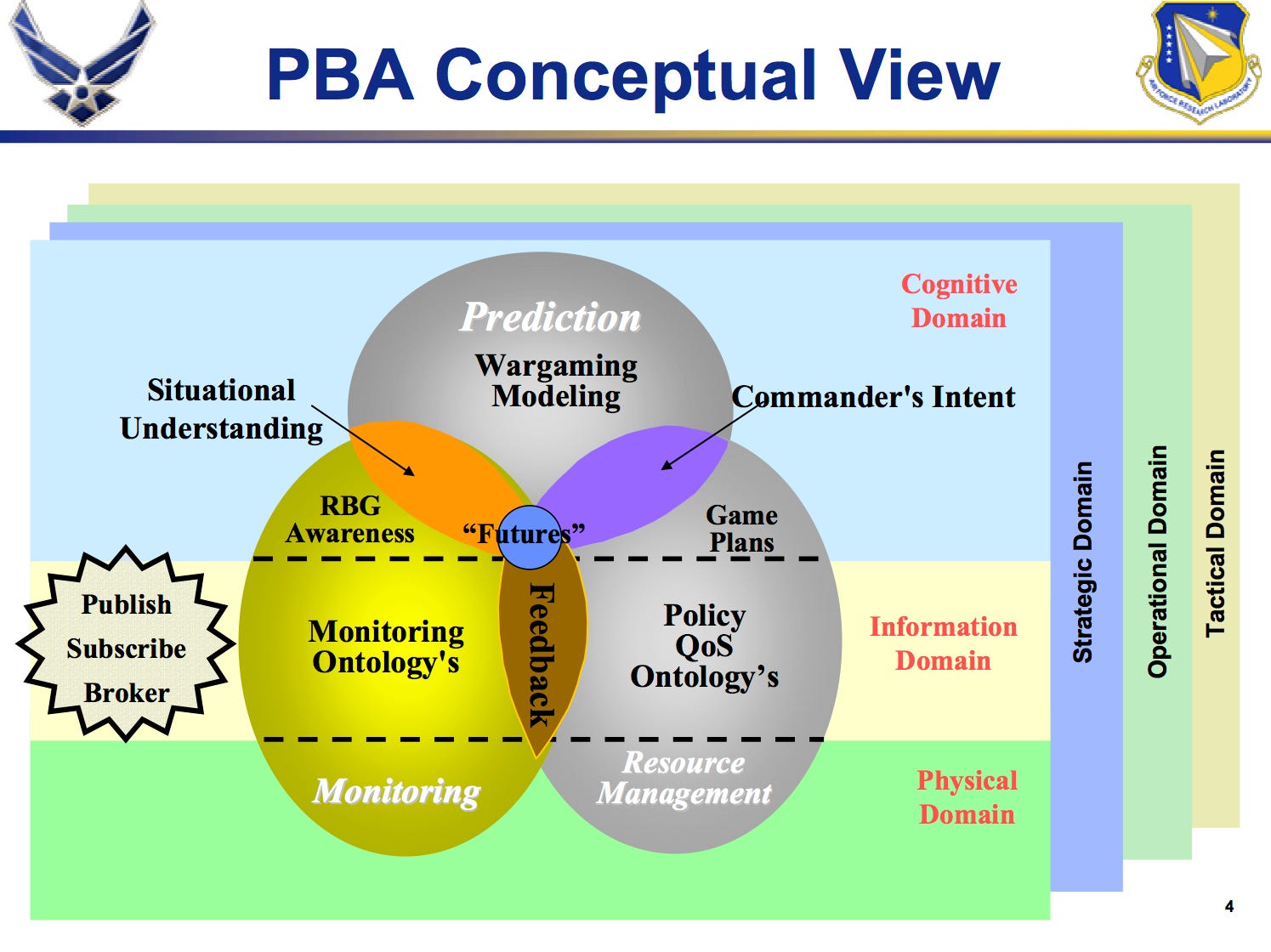
A very interesting visual language works here. Two gray eggs and one yellow egg float above abstract tricolor pastel stripes reminiscent of a flag. From the blue link where the eggs merge, a circle and the ominous word "Future" emerge, because the ultimate goal of combat space awareness is, of course, to increase the predictive ability of people in the combat space. There is also a cross-cutting set of domains: physical, informational and cognitive, and even more domains below that. The overall effect is the same as an Easter basket filled with stopping power.
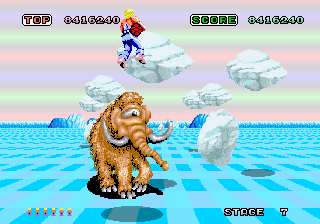
Same palette as Space Harrier, which also focuses on space awareness.
Each term turns into a little mystery: what is the commander's intention? How does this happen as a result of the intersection of War Simulation and Game Plans? By working backwards, referring to the article, you can learn not only about awareness of the combat space, but also about how the military thinks and sees the world.
Here is a different type of image, a map from a Joint Operating Concept document written for the Department of Defense and entitled “Irregular Warfare: Countering Irregular Threats” :
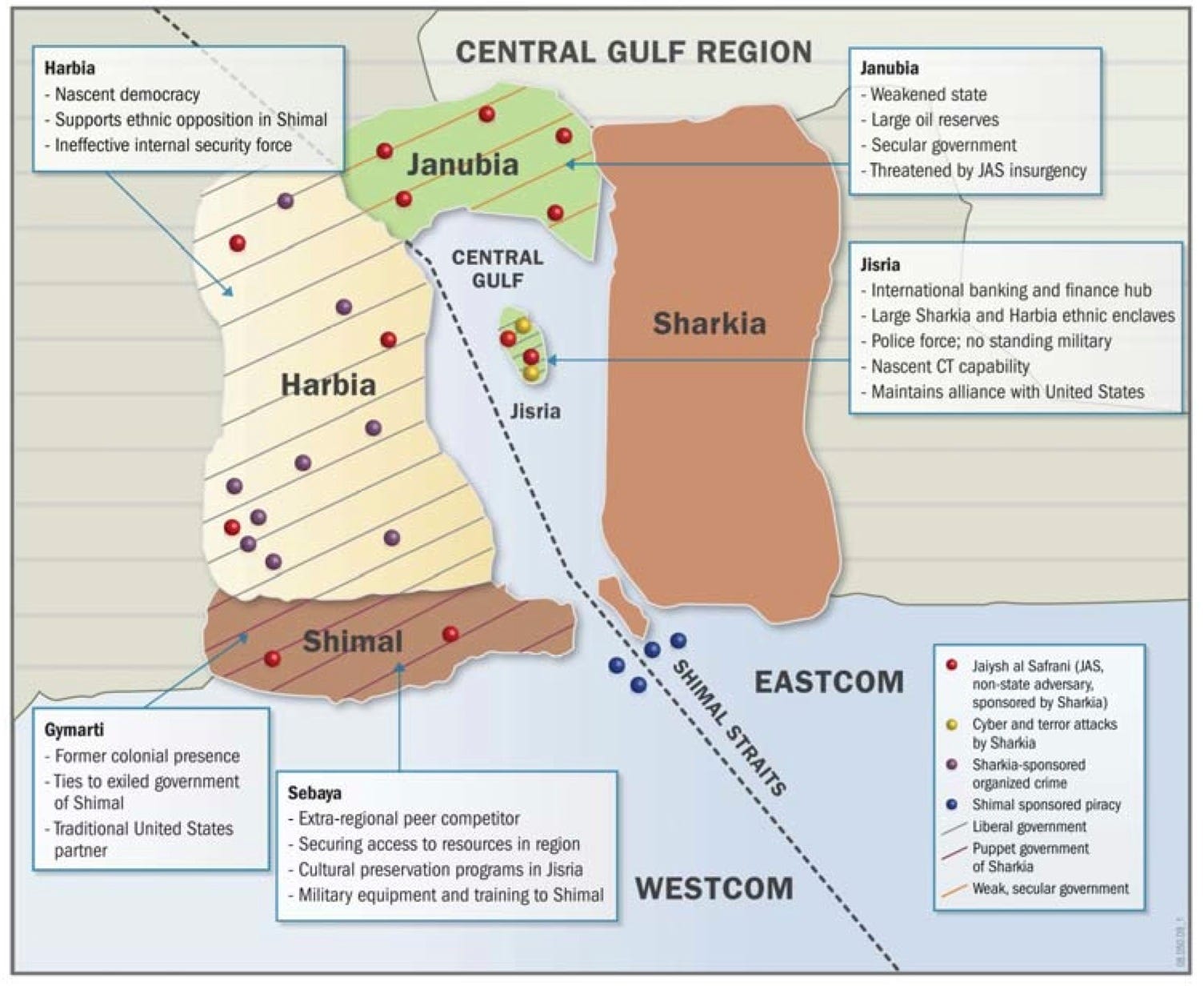
This map is part of what the authors of the article call "conditional vignette" - what civilians might call "history" or "fairy tale." It details the crackdown on riots in Sharqiya. "Although this part of the document is based on real issues," we are told, "it should not be interpreted as current events or situations in any country." This is how it all starts:
Sharqiya, a state in the Central Gulf region, and violent extremist group Jayish al-Safrani (JAS) are conducting an irregular campaign against countries in the region and the United States.
Everything goes from there, and pretty well. In the end, things will work out, with some US intervention, although there is a constant risk of Sharkian unrest.
There is also a strong trend for graphics to include icons for satellites and jet fighters because they can:

And organization charts often appear. Many of them date back to the president. Who wouldn't put the president in their organizational structure if they could?
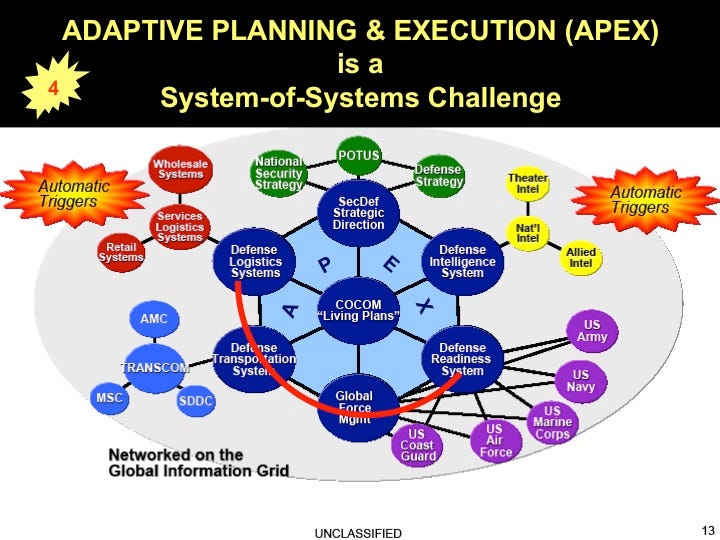
From “Developing Future Logistics Capabilities” ; notice the red stars with the words “Automatic Triggers”
“Networked on the Global Information Grid” just rolls off the tongue, doesn't it? Some of the graphics are incredibly cool and insane at the same time.
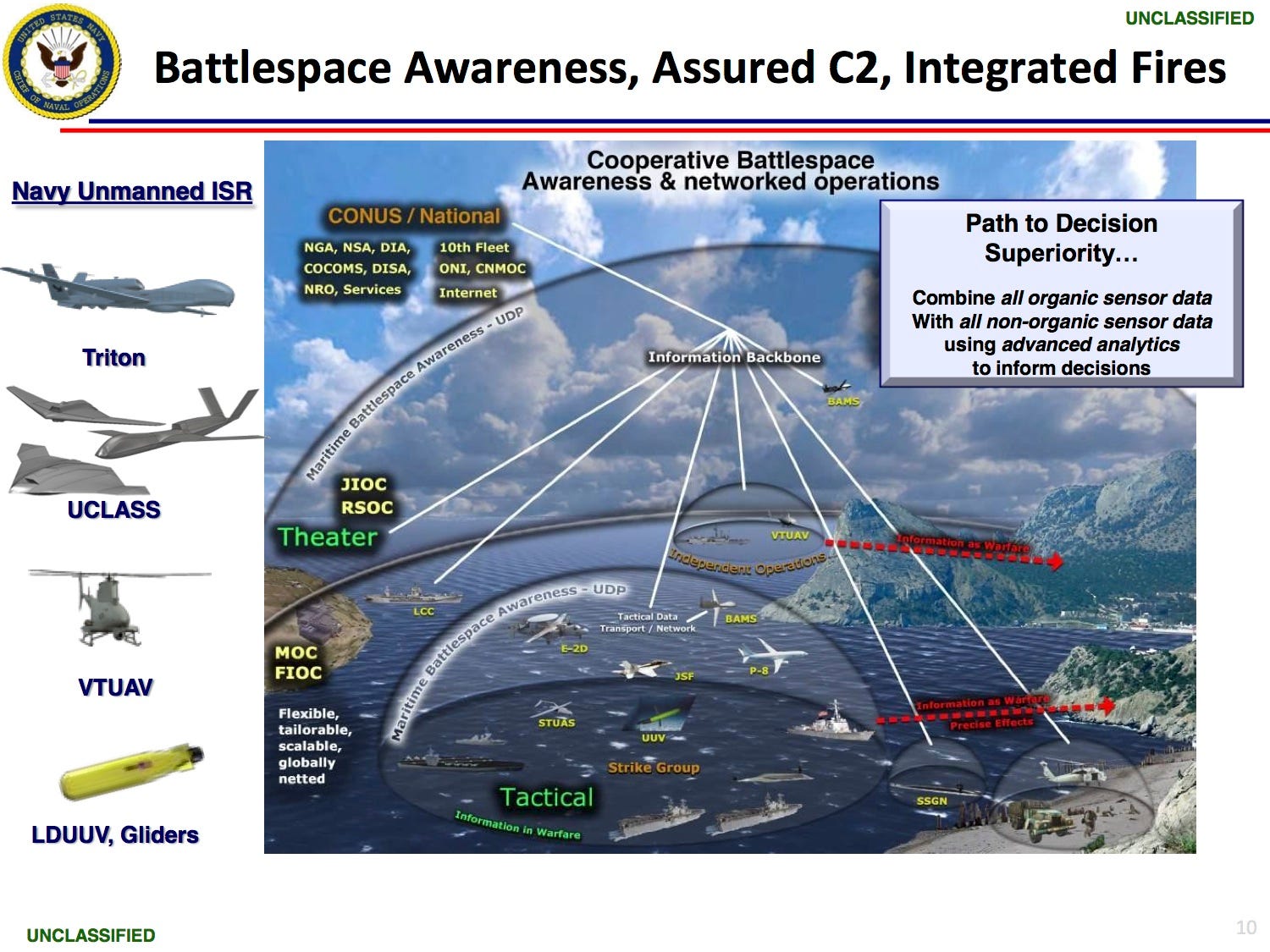
From Battlespace Awareness .
Some things defy simple classification though:
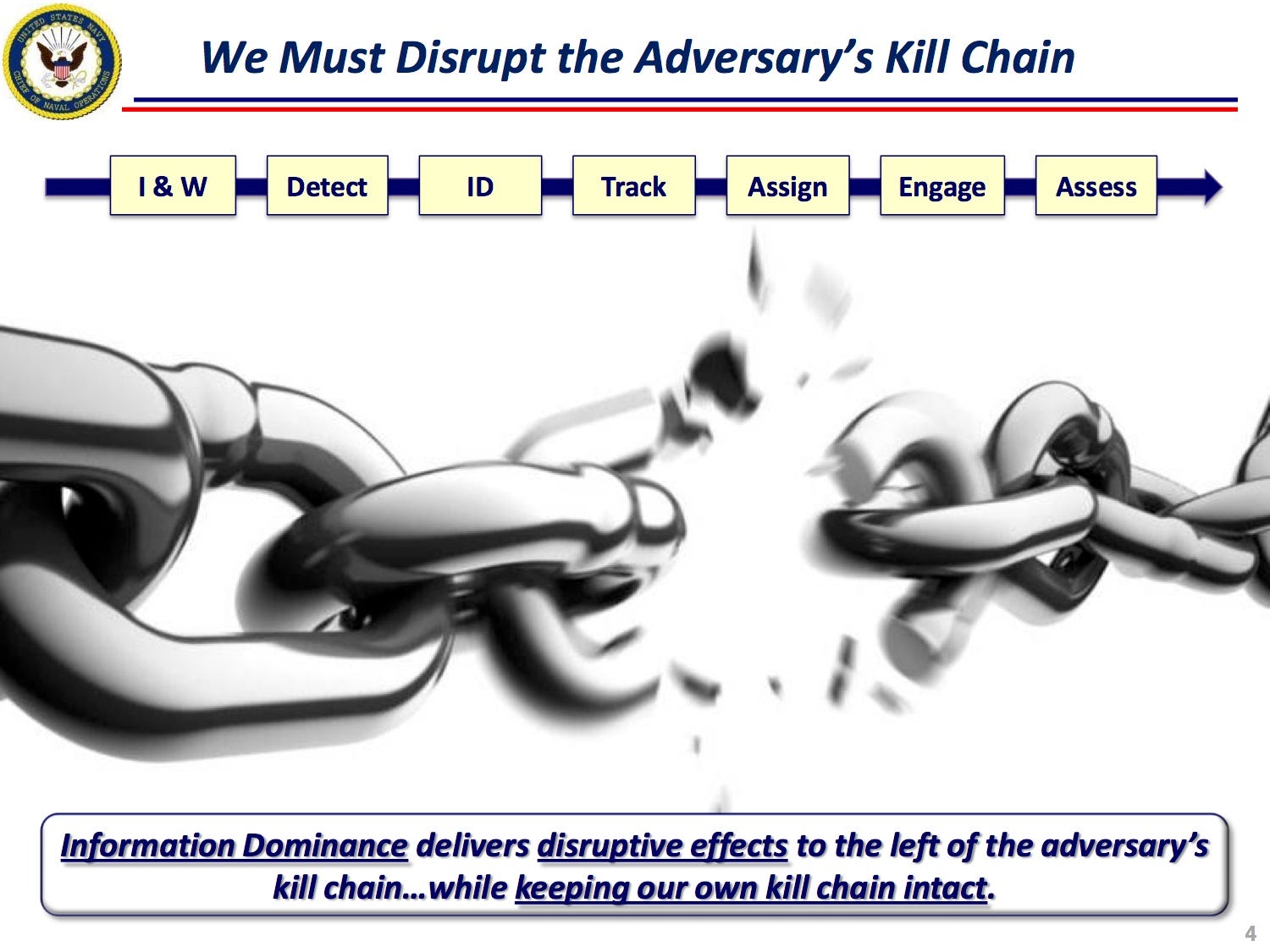
From Battlespace Awareness .
To find really mind-blowing things, you have to go up one level and look for strange meta-objects like the Department of Defense Architecture Framework. I cannot explain it better than these :
(DoDAF), 2.0 — , …
If you want to design an architecture, this is your framework - an abstraction specially designed for creating abstractions. Here's one way to figure it out:
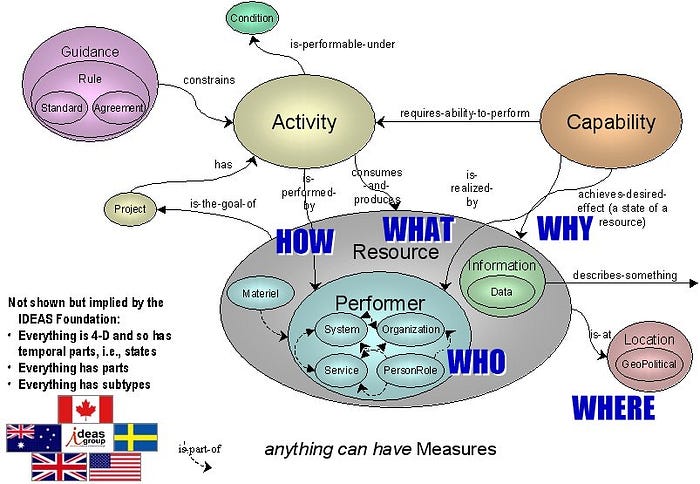
Spend some time on this graph. After a while, you realize that this image can be used anywhere in any document or presentation and has some meaning. It is a drawing that defines a way of describing everything that has ever existed, and everything that has ever happened, in any situation. The United States military operates at a conceptual level that goes beyond any other school of thought, with the possible exception of academic philosophy, because they have a much larger budget.

Typical DoDAF First-Time Programmer The
military schematics are partly so fascinating that they look a lot like the images civilians use to do their normal day-to-day work. After all, it's just software and hardware, and there aren't many ways to draw a network diagram. However, the scale of these systems is enormous: the lines are drawn between planes and satellites, not between a couple of web servers. You smell the burning money. There is also a fundamental fact that applies to each image: as abstract as they may be, these images describe the systems that the US military uses to make optimal and effective decisions about killing other people.
Thanks to Evan Hansen and Finn.
- Discussion on HackerNews
- HackerNews